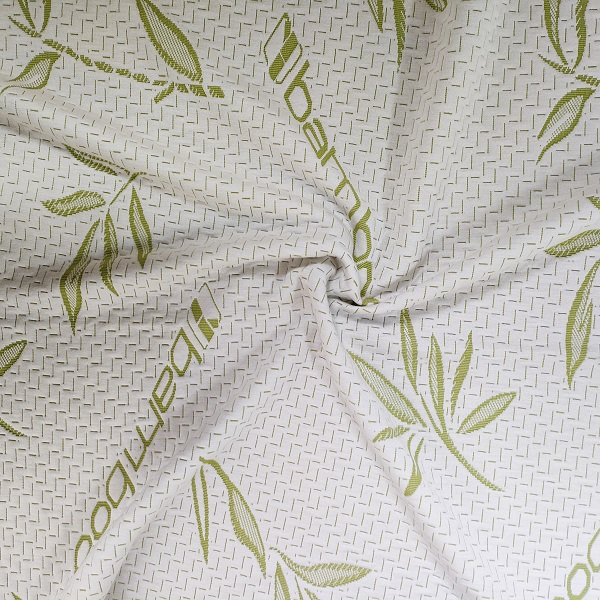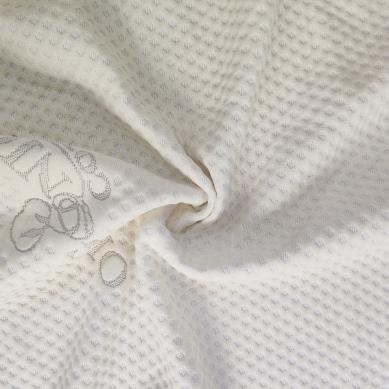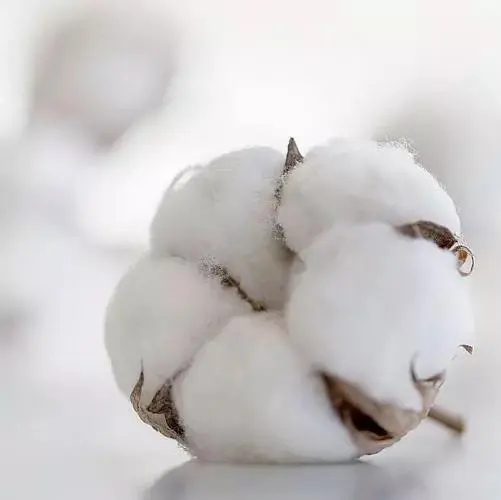Bamboo and cotton fabric are two widely available varieties in mattress. Cotton is a classic for their breathability and durability. Egyptian cotton is especially prized. Bamboo is still relatively new to the market, though they’re gaining popularity thanks to their durability and lightness. Depending on the processing, bamboo sheets can also be considered sustainable and eco-friendly because bamboo can grow rapidly with fewer resources.
Fabric labeled as “bamboo” typically consist of rayon, lyocell, or modal fabric derived from bamboo fibers. These are often relatively similar to cotton in their softness, breathability, and durability.
Bamboo is frequently considered sustainable because the bamboo plant grows very quickly and often doesn’t require pesticides, fertilizers, or irrigation. But while the raw material may be eco-friendly, the viscose process uses chemicals to dissolve bamboo pulp in order to extract cellulose to spin into fibers. Rayon, lyocell, and modal, some of the most common types of bamboo fabric, all use the viscose process.
While it may be harder to come by, bamboo linen, also known as bast bamboo fiber, uses a chemical-free mechanical process that may appeal more to eco-conscious shoppers. However, the resulting fabric tends to be somewhat coarse and prone to wrinkling.
| Pros | Cons |
| Breathable | Often use chemical processing |
| Soft | May cost more than cotton |
| Durable | May wrinkle depending on the weave |
| Sometimes considered eco-friendly |
Cotton is the most common fabric for . This classic option uses natural fibers from the cotton plant. The resulting fabric are typically soft, durable, and easy to care for.
Mattress fabric may consist of one or more types of cotton. Egyptian cotton has extra-long staples, which make the resulting material exceptionally soft and durable, but higher in price. Pima cotton also has extra-long staples and many of the same benefits as Egyptian cotton without the hefty price tag.
The price of mattress fabric typically reflects the quality and luxury of the materials. mattress fabric that use high-quality cotton with long- to extra-long staples traditionally cost more. Customers should be aware, however, that many affordably-priced options labeled “Egyptian cotton” may contain blends to save money. If you’re considering paying a premium price for Egyptian cotton mattress fabric, you may want to check that all of the materials hold certification from the Cotton Egypt Association.
| Pros | Cons |
| Durable | Some weaves are wrinkle-prone |
| Breathable | Typically requires more water and pesticides for cultivation |
| Moisture-wicking | May shrink slightly |
| Easy to clean | |
| Gets softer with additional washing |
Bamboo vs. Cotton Mattress Fabric
The differences between bamboo and cotton mattress fabric are quite subtle. Both are natural materials that tend to excel in temperature regulation and durability, though some argue that cotton is more breathable and bamboo lasts longer. They also use many of the same weaves.
Eco-conscious shoppers may flock to either option since both use natural materials, but they also each have some potential drawbacks when it comes to sustainability. Growing bamboo is typically gentler on the environment than growing cotton, but processing that bamboo into fabric usually uses chemical agents.
Our Verdict
While the differences between bamboo and cotton mattress fabric are subtle. These mattress fabric could be a good choice for individuals with skin sensitivity.
Hot sleepers and anyone who tends to sweat overnight might appreciate the breathability and moisture-wicking of cotton fabric. Shoppers on a budget may be able to find a more affordable choice of cotton fabric than bamboo fabric.
Post time: Sep-19-2022









